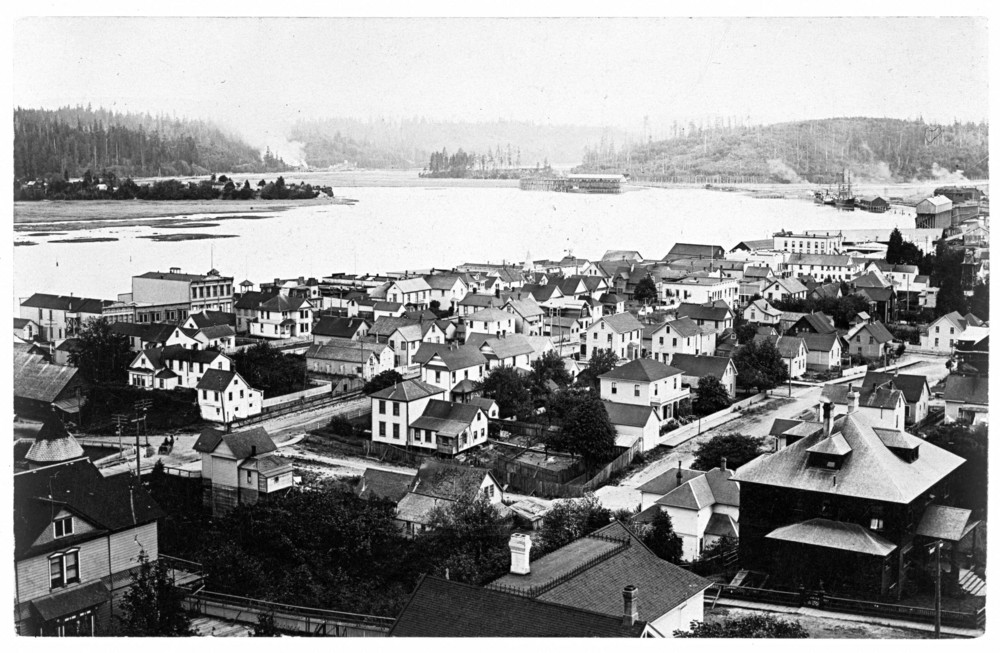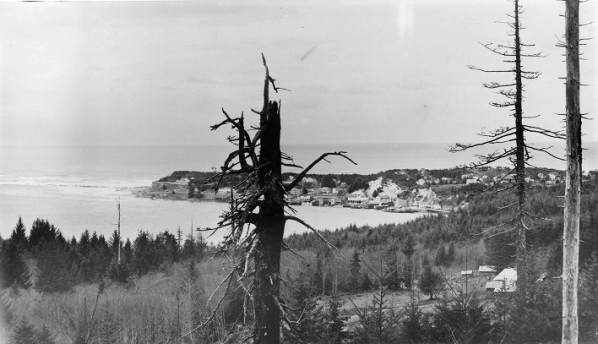For a man from Indiana, far from waterways, Alfred Qualman was an unlikely person to be a pioneer in Pacific oyster culture.
Born in South Bend in 1904, Qualman was raised in Chicago. His father often told him a story about oysters, which piqued his interest, and as a teen he and a friend hopped a freighter to look for property in Oregon that his father owned. Seeing Oregon whetted his appetite for a return trip.
After more hobo days, he married Ellen Peterson in 1929, and the couple drove to Seattle in a Model A Ford. A search for gold led them to Hell’s Canyon, the Wallowas, and the Illinois River in southwest Oregon. Gold fever turned into oyster fever, however, after the couple joined Qualman’s uncle in Oysterville Flats on Willapa Bay in southwest Washington.
The first stages of Pacific oyster culture began in southwestern Washington from seed for oysters from Japan. The oysters from the warm waters of northern Japan were tiny, ranging from pinhead to fingernail size, and were firmly attached to old shells. Larger than Olympia oysters when mature, Japanese oysters could propagate in water ten degrees cooler than the waters of Willapa Bay. They were perfect for the region, where they could be planted in “not too soft mud” in a “good tide flow.”
The primary market for Qualman’s Pacific oysters were the canneries. “As a canned oyster,” Qualman said, Pacific oysters “are supreme…tender, maintain good color, make wonderful stews and chowders. Smoked, they are for gourmets.”
In 1927, after learning oyster culture in Washington, the Qualmans moved south to Coos Bay, where there were good tidelands. They established Qualman Oyster Farms. From 1937 until World War II, Qualman struggled to make a living and feed his family, and he took on side jobs for several years. After the war, the business grew steadily, and by 1949 he had done well enough to make a trip to Chicago and buy a new Ford station wagon.
The couple's eldest son, Larry, took over the plant when Alfred Qualman retired. Ellen Qualman became a painter of land and seascapes. After over fifty years of marriage, Ellen died in 1980 at age seventy-two. Qualman married Corean Morgan in 1983.
An avowed atheist/humanist Unitarian, Qualman became somewhat notorious for speaking and writing what was on his mind. He also liked to experiment. Learning that eating psilocybin mushrooms brought hallucinations, he once tried eating a small bit of the deadly armillaria mascara and suffered terrible abdominal pain with no desired hallucinogenic benefits.
He published two books, Blood on the Half Shell (1983) and Oh Gee San, the Life and Times of Al Qualman (1989). Alfred Qualman died in 1993.
-
![]()
Oyster flats, Coos Bay, 1940.
Oregon Historical Society Research Library, Monner, Org. Lot 1284
-
![]()
Oyster farm, Coos Bay, 1940.
Oregon Historical Society Research Library, Monner, Org. Lot 1284
Related Entries
-
![Coos Bay]()
Coos Bay
The Coos Bay estuary is a semi-enclosed, elongated series of sloughs an…
-
![Yaquina Bay Oyster War]()
Yaquina Bay Oyster War
Yaquina Bay, an estuary on the central Oregon Coast, was once home to t…
Related Historical Records
Map This on the Oregon History WayFinder
The Oregon History Wayfinder is an interactive map that identifies significant places, people, and events in Oregon history.
Further Reading
Caldera, Melody, ed. South Slough Adventures: Life on a Southern Oregon Estuary. Coos Bay, Ore.: Coos Historical and Maritime Museum, 1995.
Qualman, Alfred. Blood on the Half Shell. Portland, Ore.: Binford and Mort, 1983.
Qualman, Alfred. Romance on the Half Shell. Coos Bay, Ore.: Alfred Qualman, 1990.







